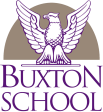Phonics
This page outlines the essential aspects of Phonics teaching at Buxton School. We follow the Monster Phonics programme, and in the Early Years Foundation Stage (EYFS) and Key Stage 1 (KS1), we conduct discrete Phonics sessions. However, it is crucial that Phonics skills are taught across the curriculum and not just during designated Literacy sessions on the timetable.
High-quality Phonics teaching ensures the vital skills of word recognition, allowing children to read fluently and automatically. Fluent readers can focus on comprehending the text. The 'simple view of reading' demonstrates that both dimensions are necessary for fluent reading. The balance between word recognition and language comprehension shifts as children acquire secure and automatic decoding skills, transitioning from 'learning to read' to 'reading to learn' for both purpose and pleasure. The ultimate goal of learning to read is comprehension. As children develop knowledge of graphemes and their phoneme correspondences, they can segment words and apply their phonic knowledge to spell with increasing confidence and accuracy.
Overview:
- Phonics sessions are taught discretely every day, with practitioners ensuring a high-quality, systematic, synthetic approach at a brisk pace.
- In Nursery, children enjoy learning Nursery Rhymes and Voice Play songs. Rhymes help children recognize individual units of sound in a word. The rhythms in nursery rhymes aid memory skills.
- The goal is for all children to develop their phonic knowledge and decoding skills throughout Key Stage 1, becoming fluent readers.
- A multi-sensory approach is favoured, catering to visual, auditory, and kinaesthetic learners. Sessions include opportunities for active involvement and creative activities.
- Children are taught to blend phonemes from left to right for reading and segment words into phonemes for spelling. This process is demonstrated and reinforced in phonics sessions and other appropriate sessions, differentiated group activities, and continuous provision.
- Throughout the six phases, all children are taught grapheme/phoneme correspondences, high-frequency words (including those that do not fully conform to grapheme/phoneme correspondence rules), and how to use their phonetic knowledge to read and write both regular and irregular words.
- Children's progress is assessed through observations during phonics sessions, as well as reading and writing, and through reading tests conducted during the year.
Find out more information about the Monster Phonics scheme and how you can support your child's phonics learning at home by reading the documents below and following the links to the Monster Phonics website.
PHONICS INFORMATION.pdfPHONICS PROGRESSION MAP RECEPTION.pdfPHONICS PROGRESSION MAP YEAR 1.pdfPHONICS PROGRESSION MAP YEAR 2.pdf

